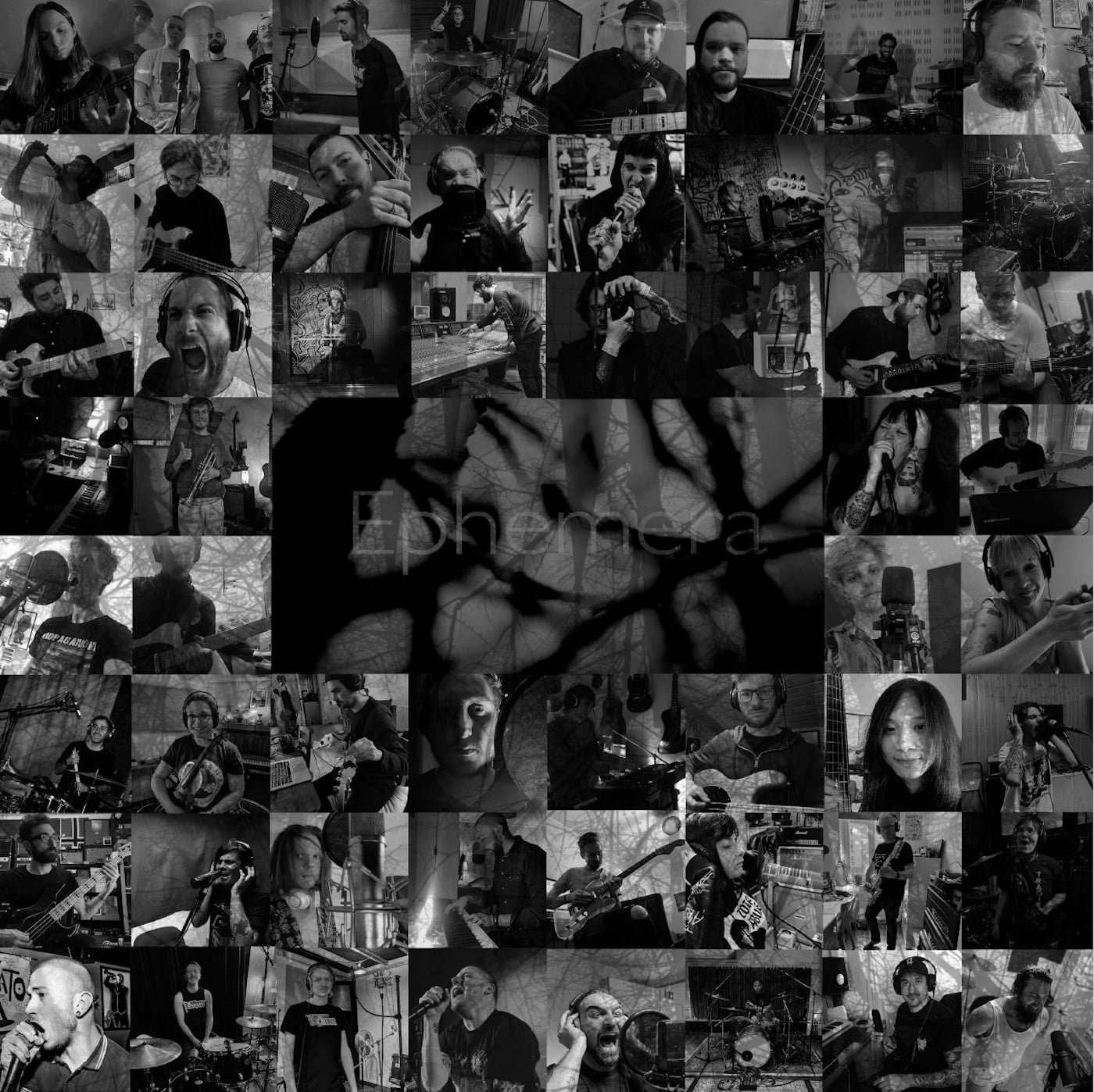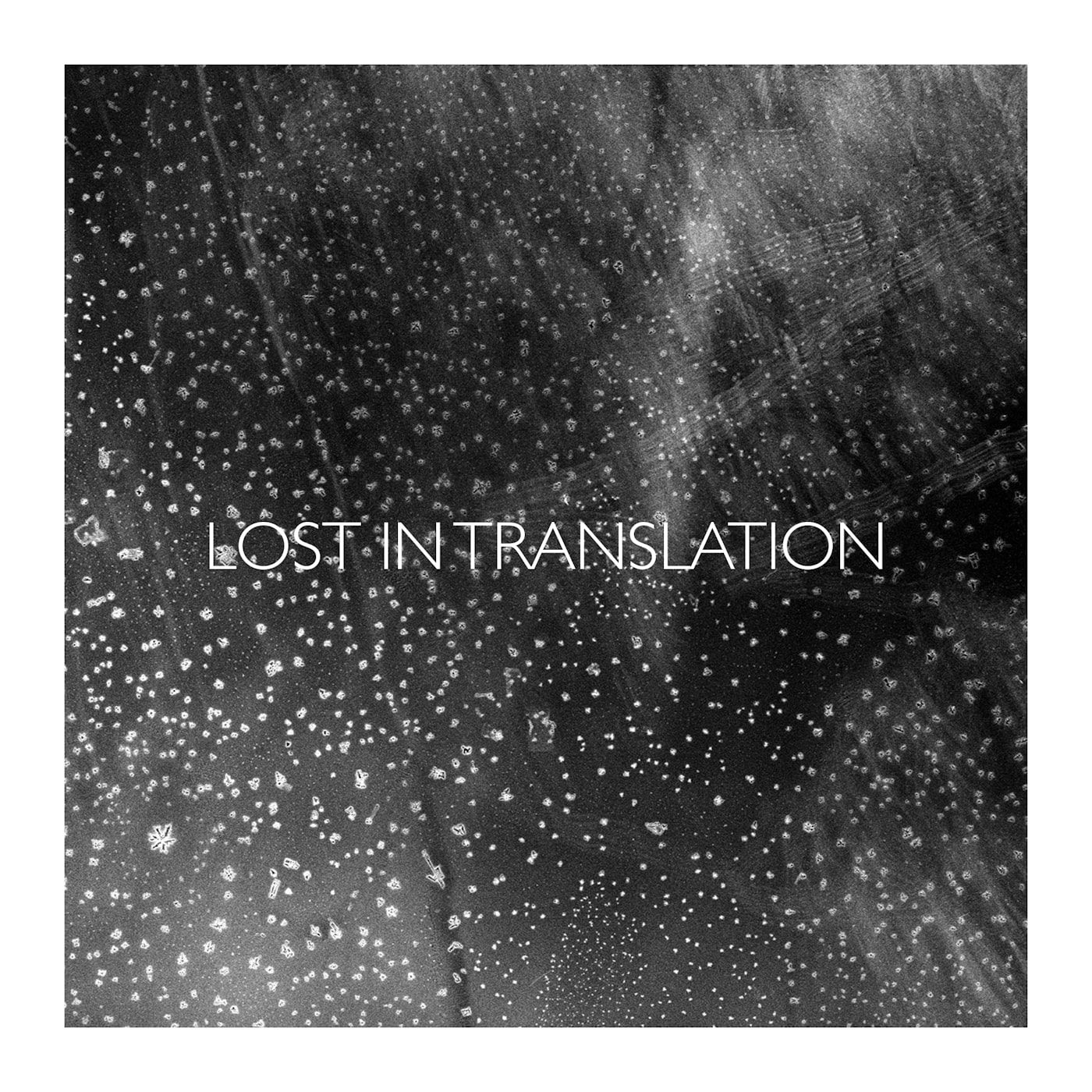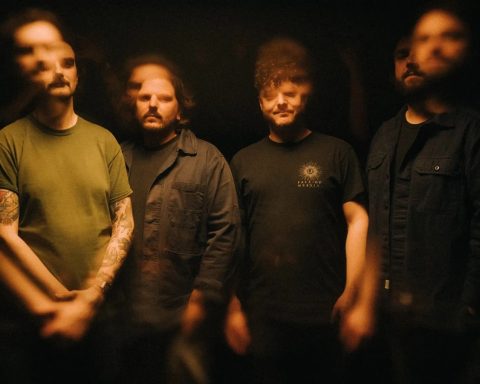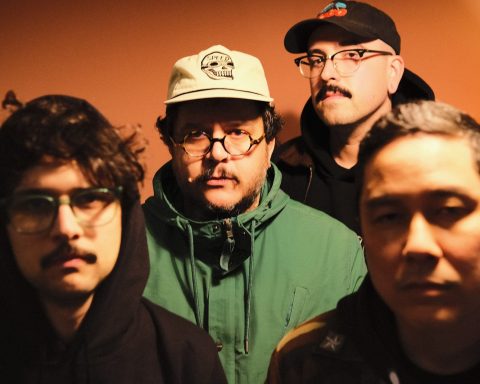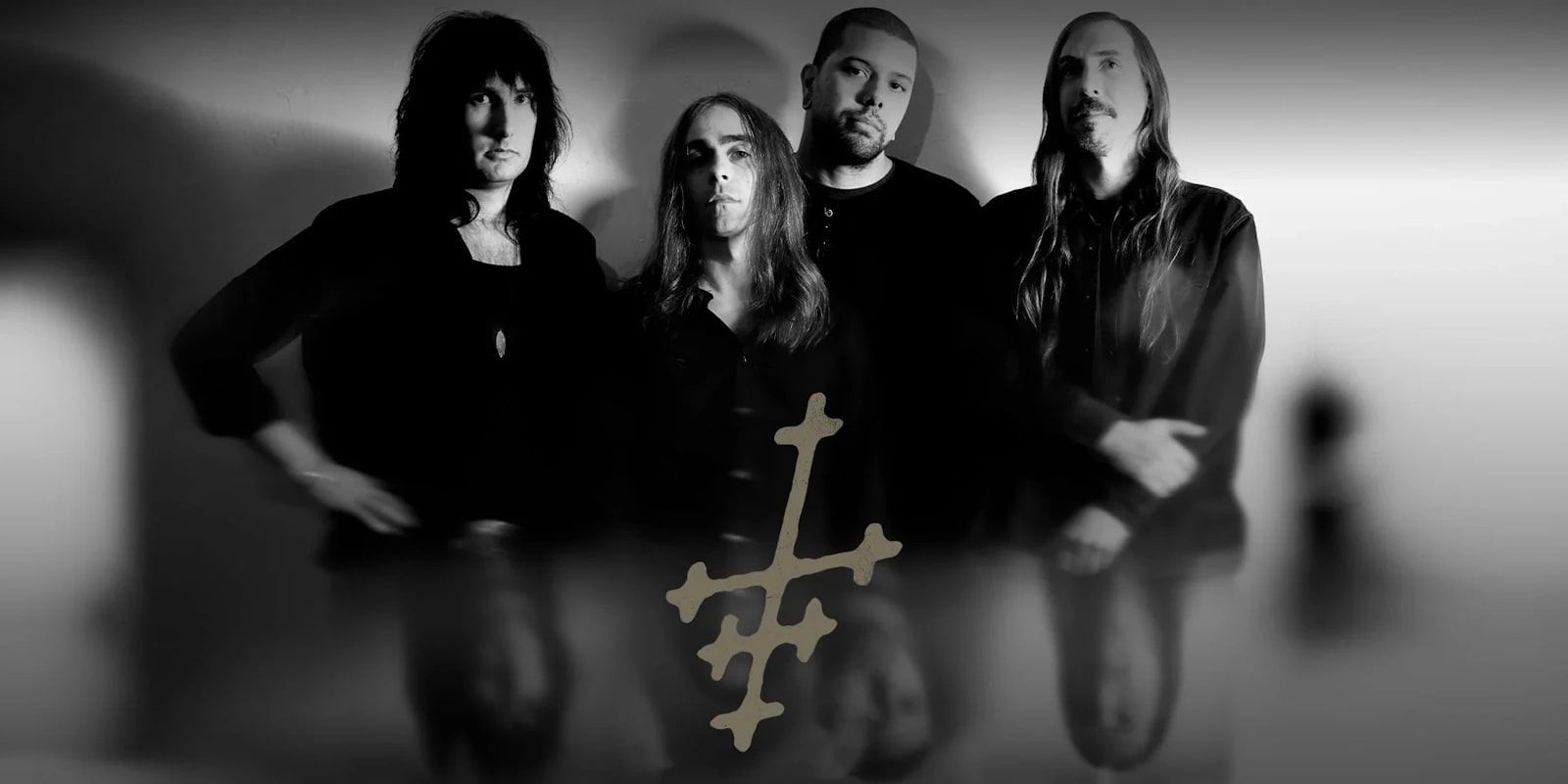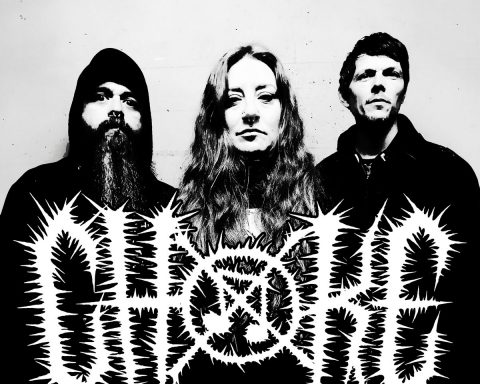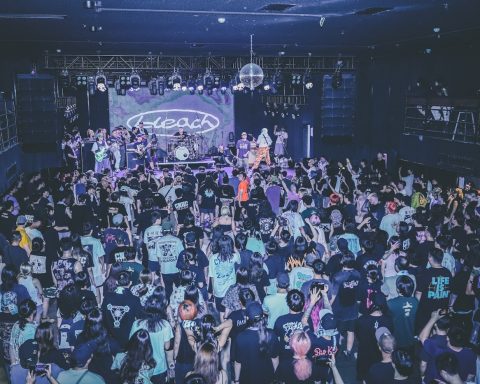Titled “Lost in Translation,” this nearly eleven-minute epic embarks on an emotional journey, weaving an intense blend of post-rock, screamo, and post-hardcore, that is nothing but a great continuation of the Ephemera II compilation, which we have been presenting for several months here on IDIOTEQ.
Ephemera II is a compelling DIY project masterminded by Gabriel Bergman Lahovary, previously known for his involvement with Heart On My Sleeve. This ambitious compilation builds upon its predecessor, Ephemera, combining the talents and visions of 56 diverse artists from around the globe. Each participant brings their unique perspective, pushing the boundaries of screamo and post-hardcore.
Each track within the compilation is designed to offer a unique narrative, exploring themes from various cultural and personal perspectives, often interweaving multiple languages, moods and styles. The complexity of the project not only highlights the technical skills of the contributors, but also their ability to weave an artistic statement from a multitude of voices and influences.
Today, a constellation of talent has converged to bring to life the fourth track from the album, “Lost in Translation” to life, each artist contributing their unique flair to this lengthy composition.
Alexis Johk of Gros Enfant Mort on drums, orchestrating rhythmic landscapes that shift and swell with the track’s emotional tides. Gabriel Bergman Lahovary and Kalle Stillersson of Heart On My Sleeve/Okänt on guitars, layering intricate melodies that dance and clash in beautiful dissonance. Alessandro Ilic Mezza of Øjne on guitar, adding a textured depth. Benn Moore of Chalk Hands on bass, grounding the track with resonant, pulsating frame. Maxime Foulon of Lorem Ipsum on piano, providing a haunting, melodic counterpoint to the heavier elements. Jonathan Spånberger and Gustav Björkman of Nionde Plågan, Simone Rah of Bleachdrinker, and Johan Hilding of Eldstad singing in Swedish, their voices melding with clarity and rawness. Fer Obregón of Naïveté singing in Spanish, infusing the track with a melancholia and nostalgia. They’ve got quite the lineup, huh?
“Lost in Translation” unravels like a tale told through soundscapes and lyrical poetry, exploring themes of miscommunication, longing, and the passage of time. The lyrics, rendered in Swedish, English and Spanish, echo with personal reflections and universal truths. Jonathan’s verses evoke memories of lost friendships and the hope of reconnection, while Simone’s lines delve into regret and the desire for redemption.
It tells stories about the struggles and lessons learned from life’s big changes and the impacts these have on friendships and self-identity. The song creatively uses the idea of writing letters to express missed connections and the difficulty of fixing broken relationships. One part talks about a friendship that has faded over time, yet there’s still a hint of hope for fixing things. Another section expresses deep regrets over past mistakes and the hard realization that some things can’t be undone, highlighting the emotional weight of such admissions.
As the EPHEMERA Part II compilation continues to unfold, it reaffirms the transformative potential of emotional post hardcore — a universal language that, even when words fail, speaks to the soul.
In the “Lost in Translation” interview, we delve into the intricate process behind creating this nearly eleven-minute track, its meaning, the trend of shorter songs, the lyrical inspirations, challenges of integrating multiple languages and vocal styles, the collaborative spirit that brought this epic song to life, and a lot more, unpacking a diverse array of perfpectives and their unique contributions.
The “Lost in Translation” interview:
Starting with the unique blend of vocals—Jonathan and Johan singing in Swedish, and Fernando in Spanish—could each of you share the story or the message behind the lyrics you contributed? What inspired your particular verses?
Jonathan: The initial challenge was to find a theme that we could all work with simultaneously, given that we were both four different people that needed to work with one set of lyrics and also the length of the song being somewhat a challenge in itself. We agreed to use the format of letters as a base line for everyone to interpret and work with however they chose, so that it wouldn’t really need to be “one” set of lyrics but rather a multitude of themes and perspectives within the same framework. My (Jonathan) interpretation was to write a letter to an old friend, reflecting on a relation that kind of got broken, but that maybe is slowly growing into something goodagain.
Simone: It’s about fucking things up and longing for a way to repair the damage that you’ve done, but being almost certain that there is no way to fix it. A period of your life that will reflect on your future.
Johan: It’s about friends and acquantiances that used to be a big part of my sphere, but disapeared due to the lack of dialouge, or one-way communication. I’d say I focused on mainly one or two of those no longer-friends when writing my parts. I think we all have past friends that disapeared to the lack of communication, perhaps more and more as we grow older. I also wrote my parts from a “realism” point of view, I got tired of using metaphors and allegories a long time ago. I feel that the realism-pov also fits the theme of the song very well, since it’s about communication. Hiding behind metaphors and allegories are just cowardly, if you really want to get through to someone, be real about it.
Fernando: The pandemic changed my life completely. It was a 180° turn of all I knew and all I thought I knew. It’s been years of lots of inner hard work and knowing myself again. I’ve lost many friends and important people along the way. These lyrics I wrote are a farewell to all these people and all the good and remarkable times I had when I was just a bit younger (from my 20s to early 30s)
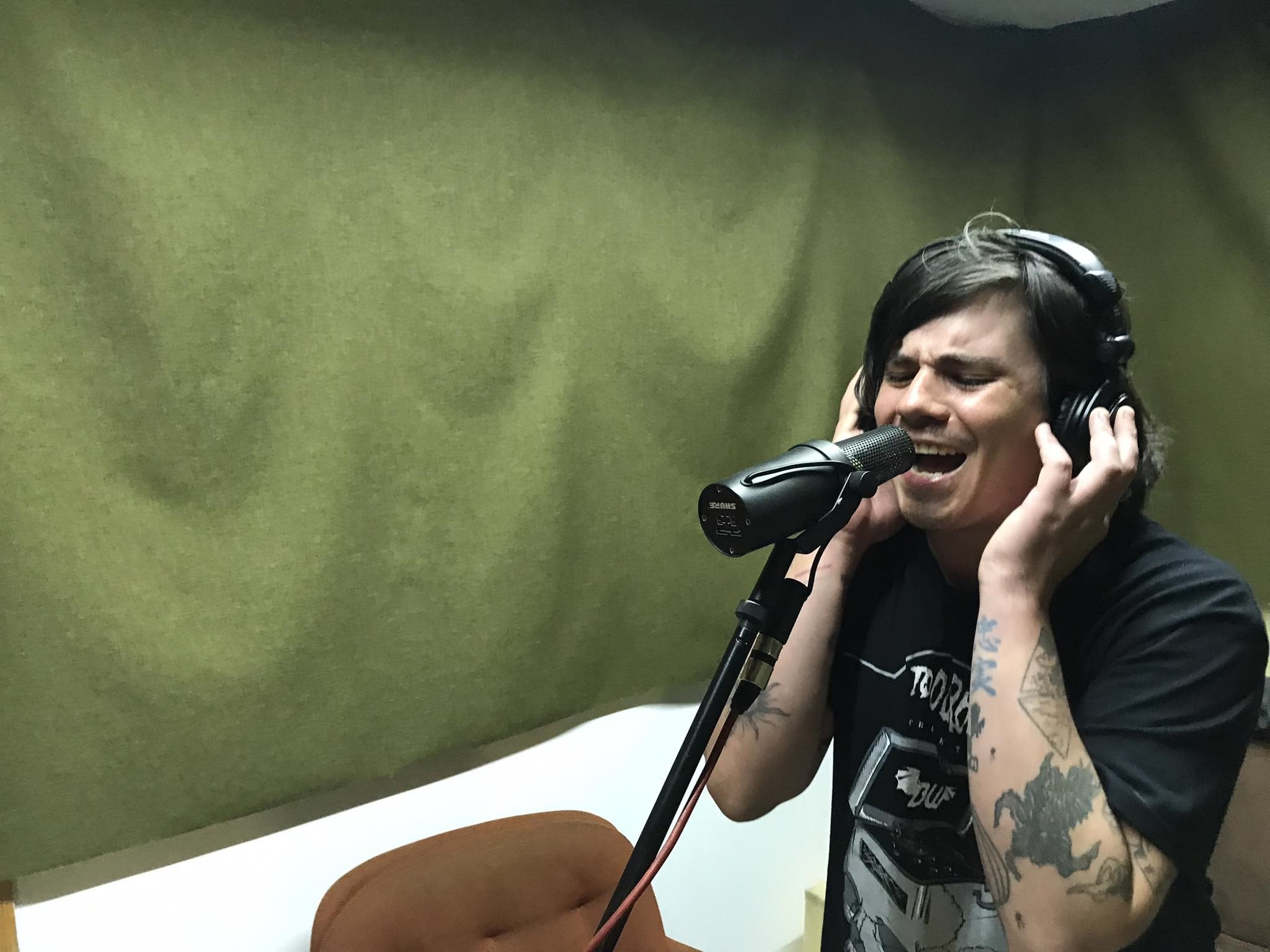
The combination of three different languages and vocal styles in one track is fascinating. How did you approach integrating these elements? Was there someone who played a key role in coordinating this blend to ensure cohesion and harmony?
Jonathan: My idea was that a mix of different languages would give the listener a cool sense of overwhelm, really. And that it could add some additional layers to the process of this being lyrics actually written by different people without us really knowing what the other persons are writing. I hoped that could bring a kind of beautiful touch to the song, as well as leaving a lot of room for own interpretations for the listeners, as most people are unlikely to understand all lyrics anyway. So I was quite eager to actually get a broad mix of languages, which also works well with the title of the song.
Simone: I think that happened naturally. The composure of this song is so powerful that you don’t really have to understand every word in order to grasp the emotions that are in there.
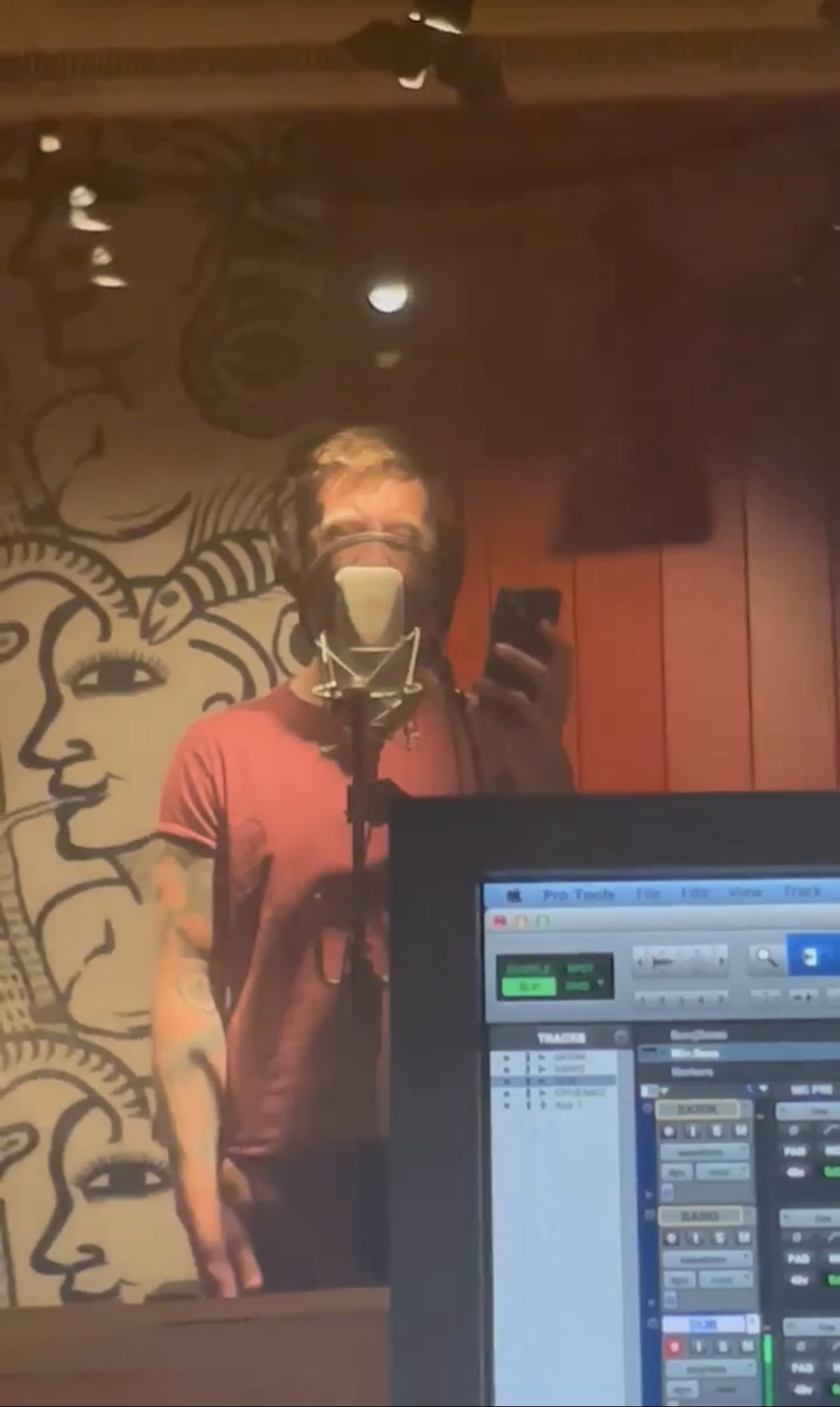
Johan: I think we just choose wich part we wanted to have a go at, talked about the themes and wrote our different parts in a google doc or something.
If I remember correctly I was the first one to record my vocals for this song? Then I asked Simone to do some harmonies over some of my parts, which I knew would fit very well, since we used to do similar arrengements in Eldstad.
Fernando: There was definitely a guide on how to get the song done and of course not without experimentation with the vocals, meaning that it wasn’t a single idea/single take for recording as we were constantly trying different ways of fitting in the lyrics in different languages. We tried to give space to everyone and with all the feedback during the time the song took to be completed, we the singers found our place within the song.
But I would also add that in addition to all this we also had some kind or sense of freedom in the sense that each one wrote our own lyrics; gave them our own meaning and finally recorded them with the intention/performance we all had in mind.
When orchestrating such a diverse vocal arrangement, what were some of the challenges you faced? How did you work together to overcome them and reach the final vocal harmony?
Jonathan: I don’t think we had so many challenges really, because I think that everyone kind of went into the project with a mindset that you weren’t going to be able to be in control of the full output. Of course, we had some retakes of some parts and scrapped a few lines and sections which we agreed didn’t really fit with the other persons’ contributions in the end. But that was just a few occasions, so all in all I think the process worked quite smoothly. Early on, we divided the sections to put our respective main focus in, but everyone kind of picked their personal favorites and that worked really well. And the final touches really were thanks to Fernando coming into the project a bit later, which gave him the opportunity tosupplement and focus on really melting the different sections into one song.
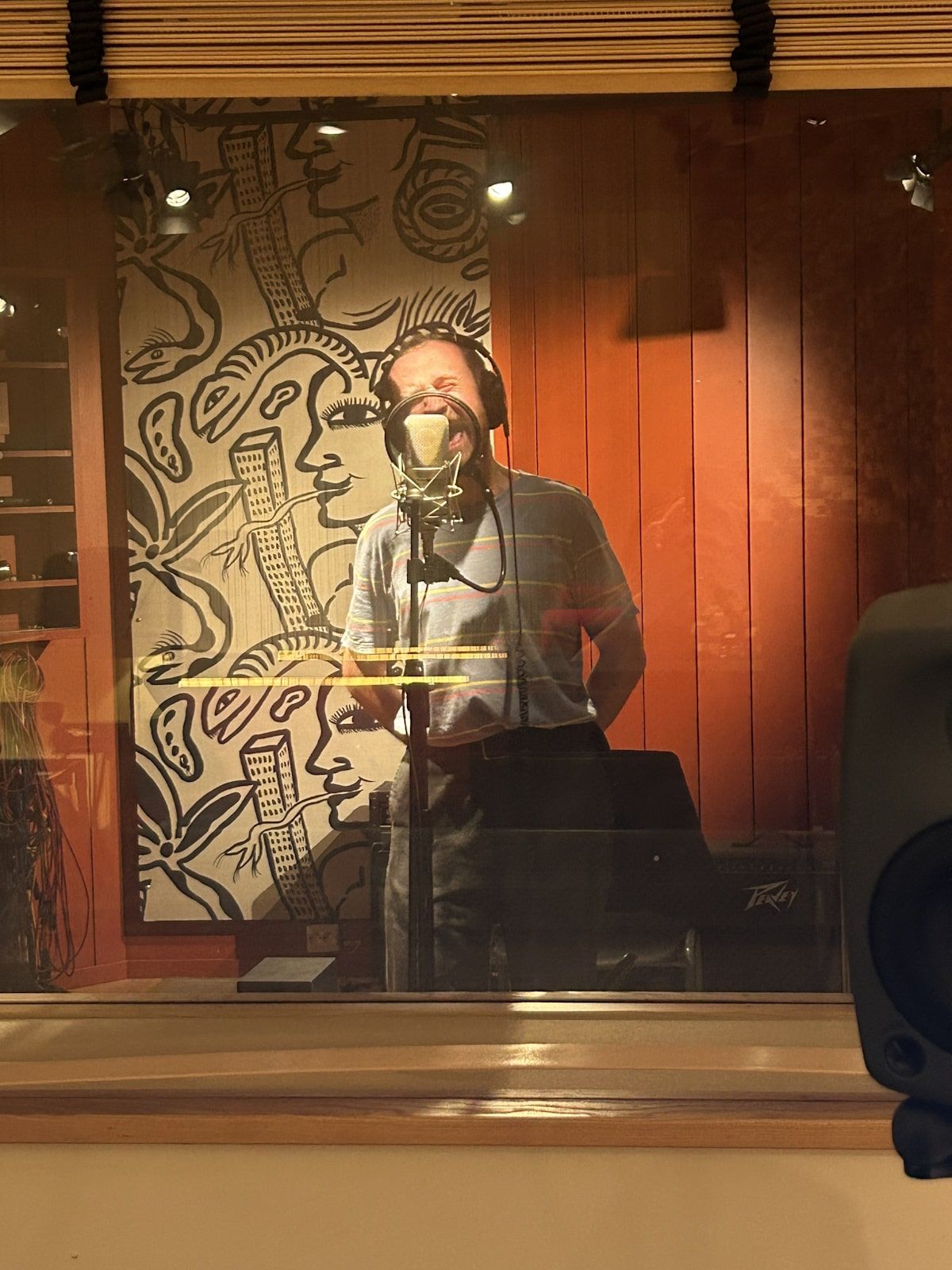
Simone: I did some ”trial and error”. I had a few parts that I had to cut out because it became too much of a mess with all the different styles of singing. It was kinda hard when you didn’t have the other vocalists around you for feedback while recording
Johan: Biggest issues was probably time, and living in different cities/countries. But I guess everyone is used to work in a smiliar way nowdays, since the pandemic. We did not really have to change or redo anything after recording our parts, everything seemed to fuse together really well. Only thing we scrapped was a short vocal part during the intro.
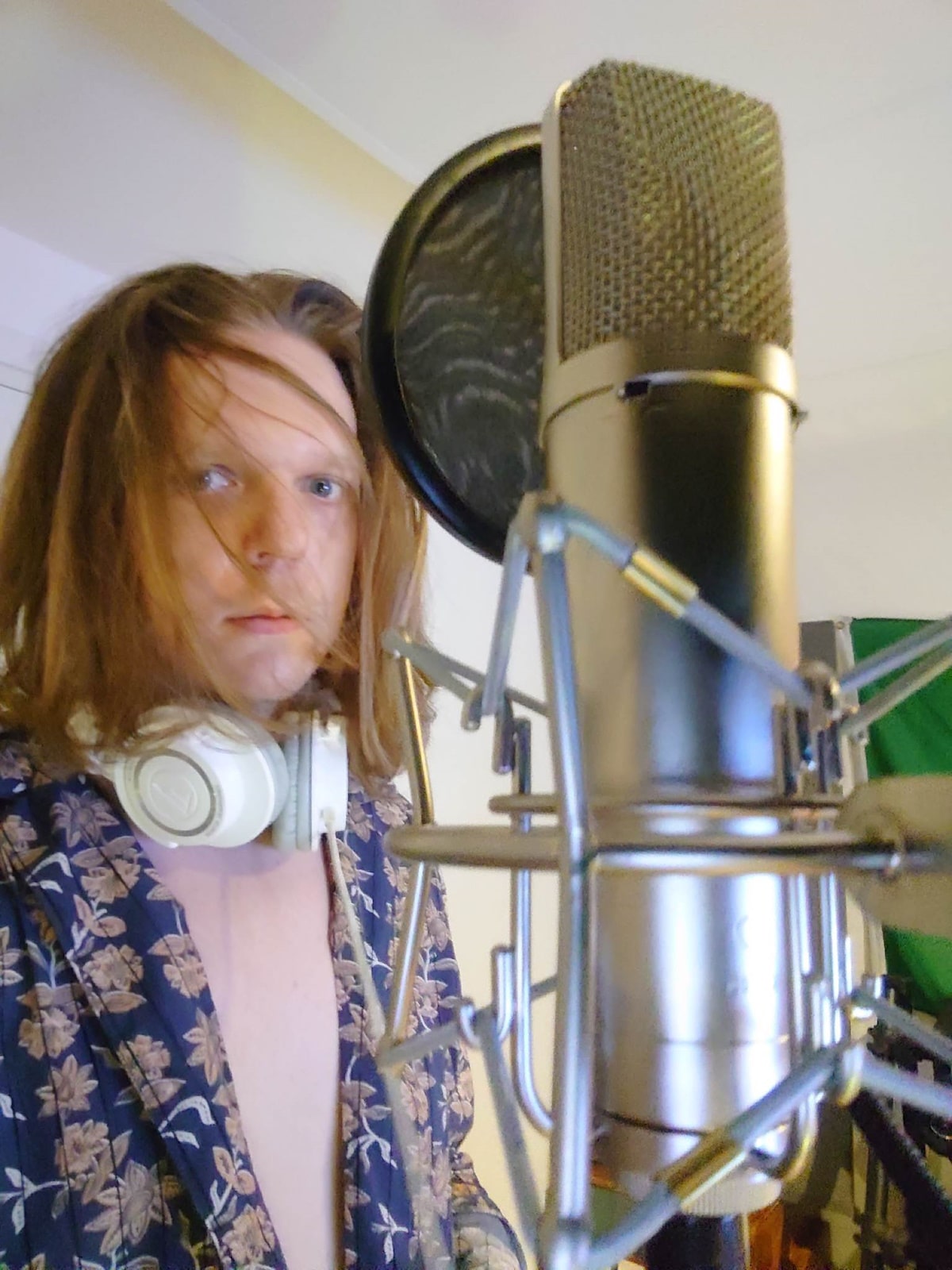
Fernando: Well I think it definitely was a challenge trying to have five different singers pretty much at all times. Like stated before, it was through feedback and the coming and going of different ideas that allowed us to reach the desired outcome. Lastly but not least, I believe each singer faced their challenges on their own and that’s where the magic in art resides… connecting the dots and to finally behold a collective creation as one. One single result, the sum of efforts from multiple people involved.
I’m curious about the lyrical depth of each part you sang. Can you delve into the themes or emotions you aimed to express through your lyrics?
Jonathan: In my case, I guess the main emotions are sadness, hope, as well as warmth and nostalgia. And maybe the key item here is really communication, or difficulties with communication (another aspect to which the song title can be related.
Simone: For me it was a lot about drinking and how that fucks up the people around you (relationships, friends etc), and to deal with the anxiety you ”self-medicate” even more, until it’s spiralling downwards and you end up alone and wishing you could’ve done things differently. You try to cover it up with new stuff, but you keep looking back at things that once was. Scenery, homes, scents.

Johan: As I stated before I always try to write realism as much as I can. Funny thing about realism is that it often wooshes past the people it’s about. One’s reality, or perception of reality, is not the same as someone elses. My sky is blue and your sky is red.
After I recorded my part I played it for one of the individuals I wrote about, but he did not seem to catch that it was about him, haha. There’s no bad blood really, just friendships that have fizzled out. To specify, the lyrics I wrote is about things we used to do together, things we did, and how it is nowdays. With a sliver of hope at the end, maybe, there’s hope at reconnecting. Small, small steps, eventually.
Fernando: Yes. Like I stated on my first answer. My lyrics, the one in spanish are something of a farewell letter to my younger self and to all the people, places and experiences that kept me company for so long. These are lyrics filled with melancholy and nostalgia and an overall feeling of sadness.
5. The song’s structure, flow, and length—was this something meticulously planned from the beginning, or did it evolve organically during the composition process? Who would you say was the primary architect behind the composition?
Kalle: When I received the song it was 10 minutes and 55 seconds of just Gabriel’s guitar, and to be honest, it felt like 10 songs in one and it was extremely difficult to see a whole song. My first thought was, this idea is like 8 minutes too long haha. I wrote my guitars part by part and didn’t think so much about how everything would fit together, it was hard to understand in an early stage. I must say that I am extremely impressed by how good everything eventually became and how well everything fits together, it exceeded my expectations by far.
Everyone has made a fantastic effort on this song. It was a super fun project, and I’m really proud to be a small part of this. Thanks Gabriel.
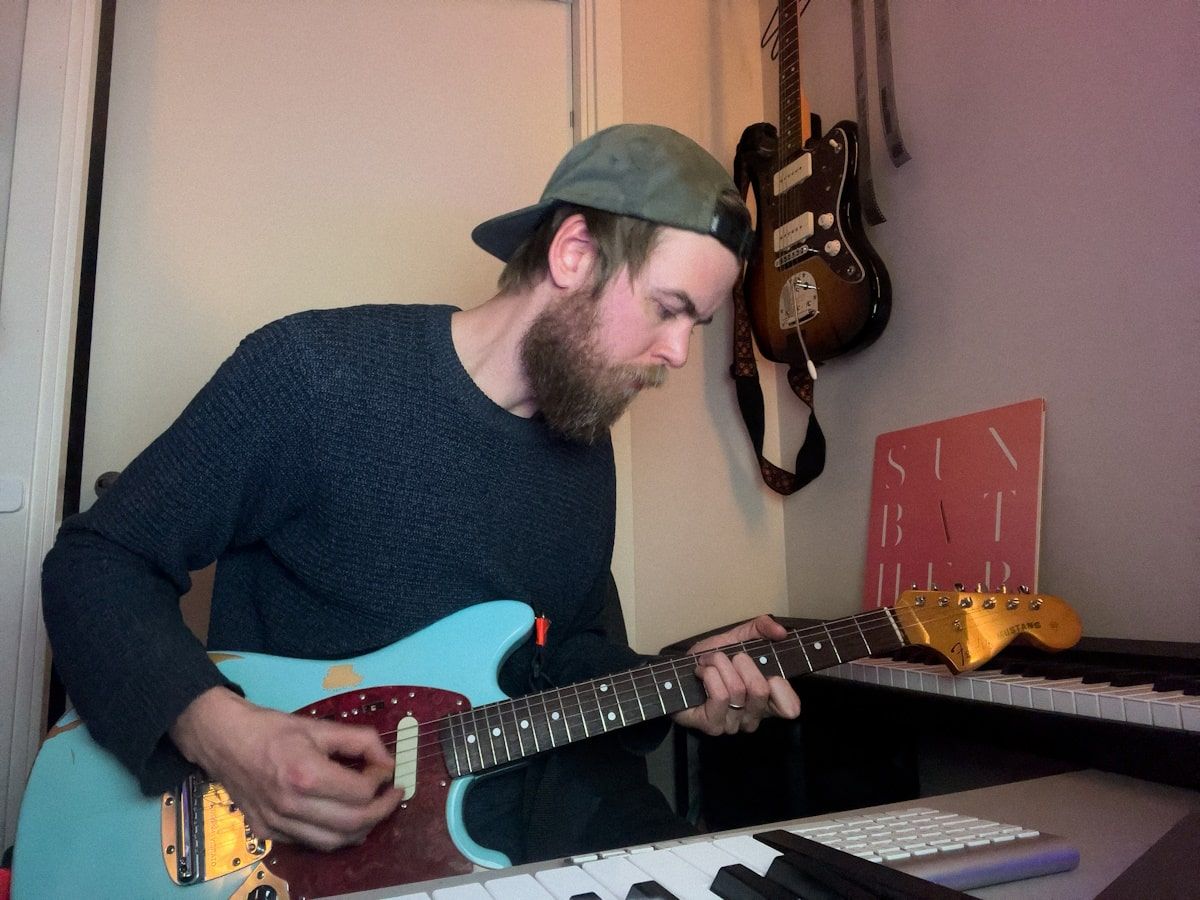
Alessandro: Gabriel was undoubtedly the mastermind behind it. I received the files early on, when Gabriel’s and Kalle’s guitar parts were the only ones tracked down. Despite that, the song was already over nine minutes long, and the structure and overall mood were already there.
For me this was the first time writing a song that someone else had already started drafting. In a collaborative project, most of the time you don’t want to overdo, and let others have enough space to express themselves after your pass. I believe this is in part the reason why the original ideas still shine through the final song, despite so many people have worked on it. Hearing it first in such a raw, barebone form, and then as a finished piece with all the elements in place, I must say it turned out better than I could have ever imagined!
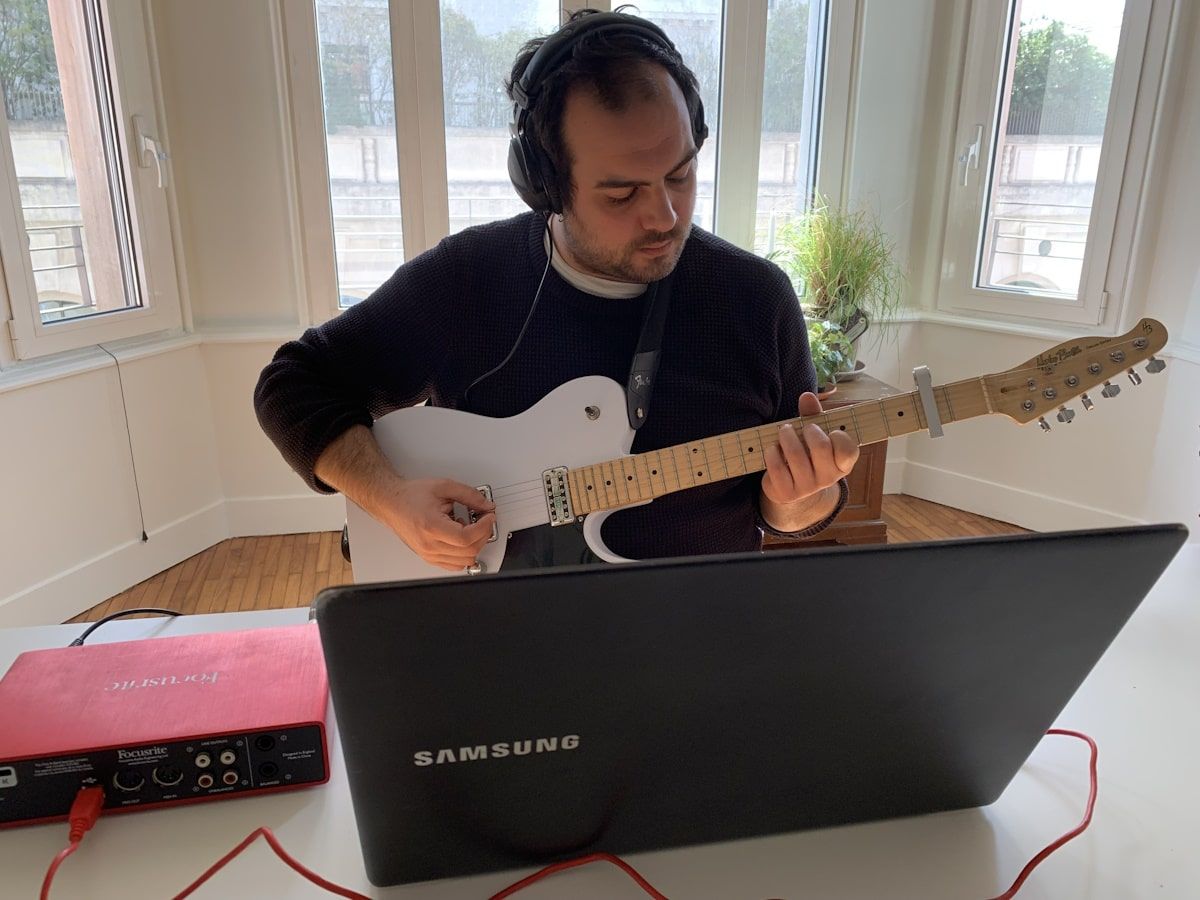
Fernando: From my perspective it was Gabriel Bergman the one in charge pretty much of everything. The architect. “The Ghost In The Machine”*
From the get go I knew it was a very long song. When I entered the conversation, we were already discussing a 10 plus minute song.
I would say everything actually evolved organically but without taking in consideration everyone’s feedback on my vocals, it was Gabriel the one who guided me through the song and how my vocals could end up being a good addition and not just more vocals over vocals.
For Alexis and Kalle—integrating instruments like the drums and guitar into a track that carries both harsh and melodic elements requires a delicate balance. Alexis, could you share how you approached the drum composition to complement the diverse vocals and narrative? And Kalle, you’ve added special effects to a guitar part; can you elaborate on these effects and the atmosphere they were intended to create?
Alexis: When I tracked the drums, the structure of the song was done but I had only two guitars to follow. The rest of the instruments were tracked later. For a song that is that long the goal was to create some dynamics between parts by varying the intensity, the tempo and the busyness of the drum parts. I kind of like how all the instruments follow these subtle changes even thought we didn’t talk to each other!
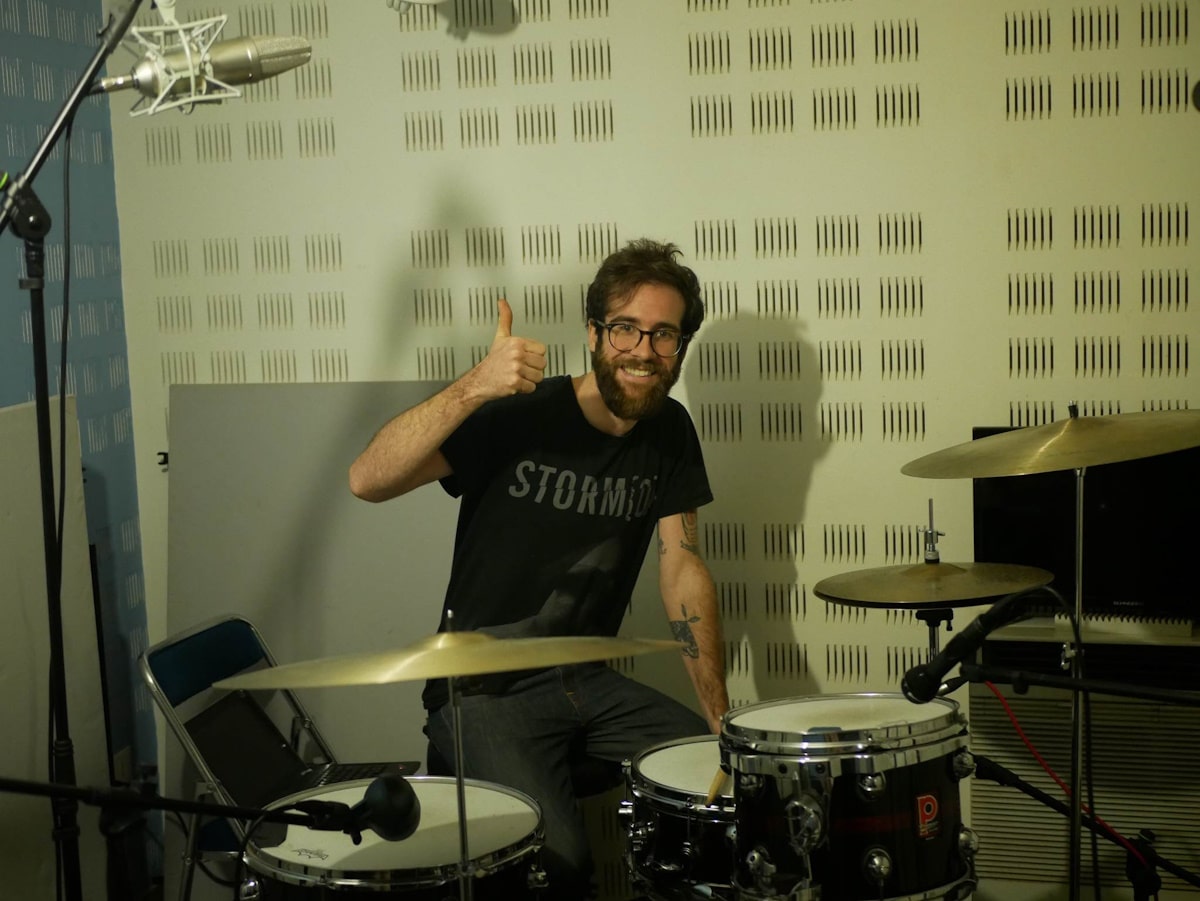
A question for Maxime. What was your process for blending the piano with the heavier elements of the music, and how did you ensure it enhanced rather than overshadowed the overall composition?
Maxime: When adding a piano to an already made composition, you must be careful not to overdo it so as not to make the music heavier. The piano plays punctually but effectively I hope!
In light of the trend towards shorter songs in today’s music scene, what are your thoughts on this shift? Do you see it as a limitation on creativity, or does it challenge you to distill your message more powerfully?
Ben: I think different song lengths tend to suit different genres. A short song can sometimes invoke energy and passion much better than a longer song!
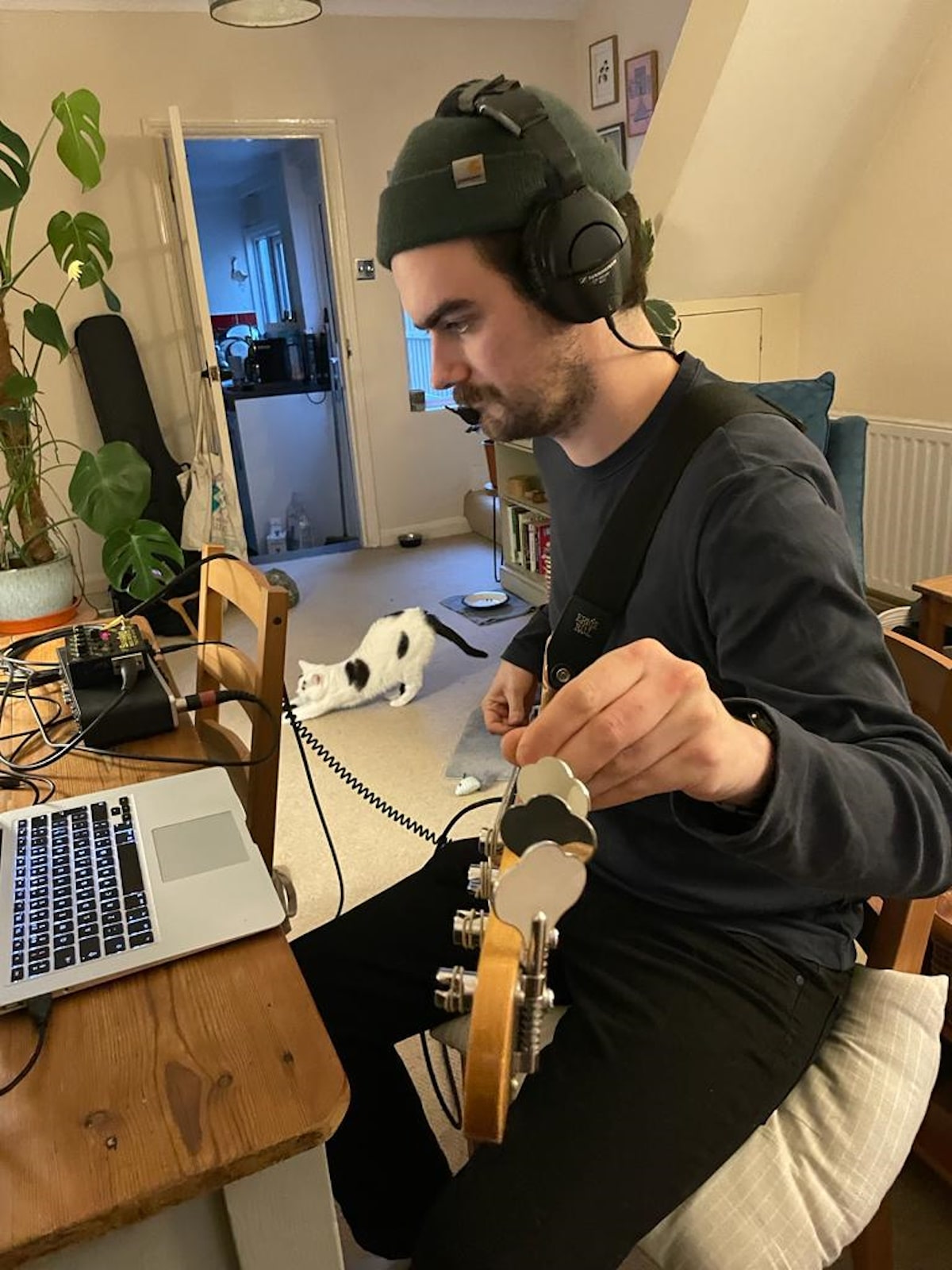
Gabriel: So the first song which turned out to be Quattro Stagioni was originally over 10 minutes long but I changed it after talking to my friend Antonie. My feeling was that it was quite cool to do a long song and this song turned out to be the real long uncut song. With just my guitar I think it would sound quite strange but in my mind I heard that this could be a 1 song EP. With all the people involved, it turned out to be the longest and one of the coolest songs I have written together with these amazing people. Kalle and I have written a lot together in Heart On My Sleeve and Okänt, and I wondered how it would sound to have Kalle on this song together with Alessandro from Øjne.
This is the only song with 3 guitarists. I know Kalle and Alessandro are playing some parts back and forth but in the end we all sound like 1, or at the most, 2 guitarists together. The blend of all our styles is perfect. Additionally, I’m so amazed how fast and great Alexis recorded the drums on this. This is not a short song and his groove and drum style are perfect. The bass also matches up perfectly with the rest.
The piano gives the song another level and the singing is so great. This song wasn’t easy for anyone. I just wrote one guitar tune, but all these people made it really cool. It’s a screamo journey where you get Lost in Translation.
One funny nobody knows is that I remembered wrong about who was the singer in Eldstad. I had known Simone for some years and in my mind, he was suddenly the singer of that band. So i contacted him to join this song. One day my mind came back and thought no it’s not Simone it’s Johan who is the singer in Eldstad. I laughed to myself and directly contacted Johan to see if he was also in. Now I’m so happy that both of them are in this song. They have different voices and are a cool mix.
Maxime: For me, you can’t express the same emotions in long and short songs or at least not in the same way. I like both, the effectiveness of the very short pieces, to the essentials. But also the atmospheres that we can work on longer pieces. I think we need to keep creativity even in the choice of song lengths!
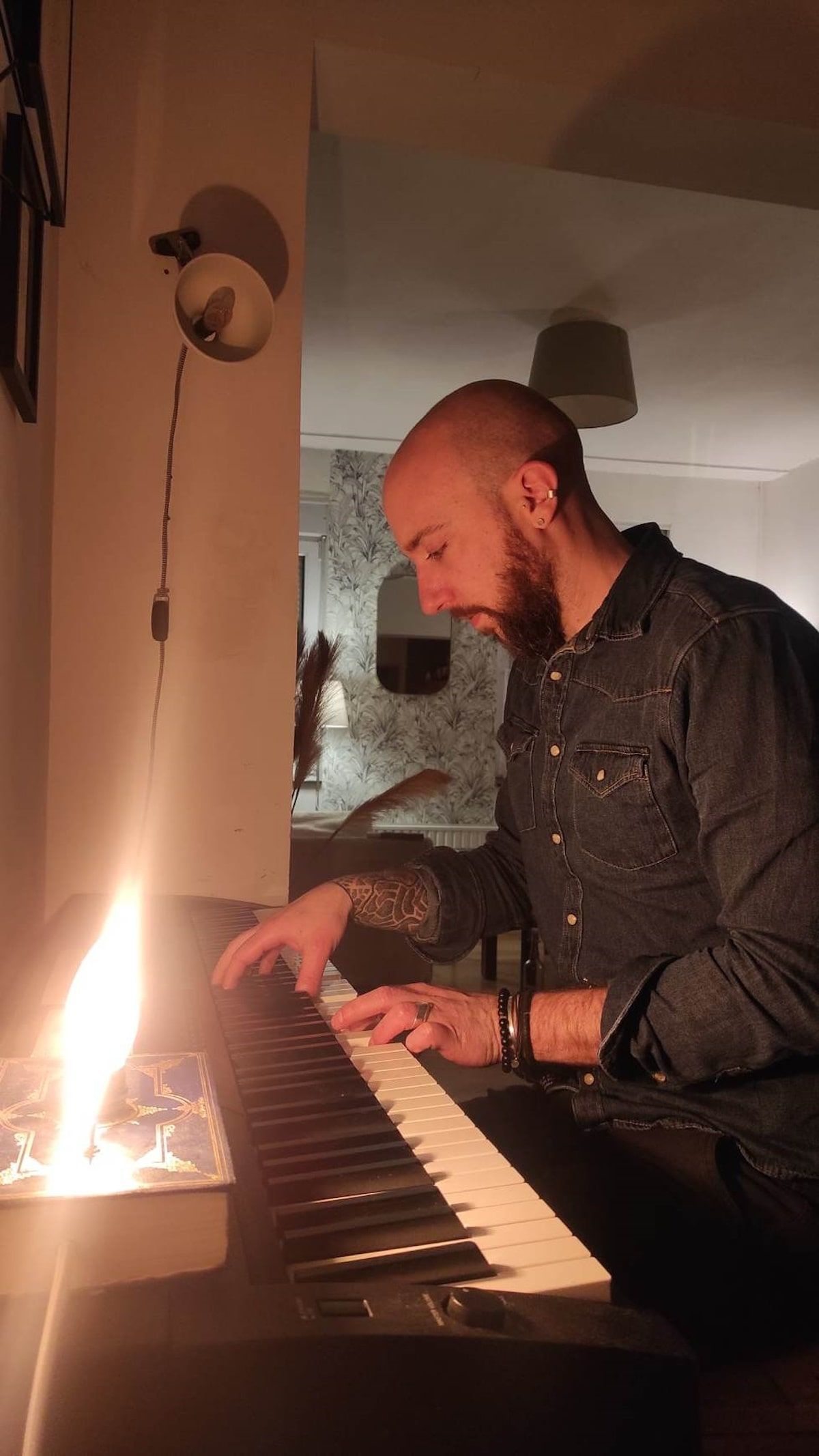
Johan: I think songs should be around 3 minutes or above 8 minutes. There is no middle ground.
Fernando: I don’t find this shorter songs trend to be a threat as everything is destined to change and evolve into something different. Also there’s always a pendular effect in life, you know, “what goes around comes around”. What I mean by this is that there will come a time (it never stopped happening actually) where longer songs will be “a thing” again (just like, for example, Kendrick Lamar does epic videos in every sense and in many of them the song is even edited to be shorter but not the video length) I believe it’s a matter of how much are people invested in your project and its outcomes.
To actually answer the question. I see it as a challenge to deliver my message in less time but the aim is to deliver the message as powerful as a longer song. Still, we need powerful short songs so we can have powerful and meaningful longer songs because one of them cannot exist on its own. We need both extremes.
Alessandro: Each song should be the length it is, as long as it serves a purpose, as long as it works. All I care is deliberateness. When a song has to be exactly that long, if who wrote it managed to find the right moment to end it, you immediately feel it—and often you find yourself pressing play again right after.
The title “Lost in Translation” evokes a sense of miscommunication or misunderstanding. What’s the story behind choosing this title? Does it reflect the multi-lingual nature of the track, or is there a deeper narrative at play?
Jonathan: The original idea was to catch the fact that we wanted to work with a multitude of languages, as well as the format being letters written by each singer without anyone really knowingbeforehand what the other persons would write. So, we assumed there would be a (good) “mismatch” of lyrical perspectives and in that context, I got the idea to the song title. But I think the title works on another level as well, namely that the letters are for many/all of us representing communication that hasn’t really worked out. Either as a lack of communication or just difficulties in reaching the recipient with what one really wants to tell or show. So, it can be “translation” not just in different languages but also in clear communication just being really hard. Another “bonus” the way I see it is the fact that “Lost in translation” is a well-known phrase (with somewhat different associations though) so that it’s easy to keep in mind for people hearing about it.
Simone: I think it’s a miscommunication between two beings that don’t really understand each other, or doesn’t show their feelings. Cowardness of showing your true self.
Johan: Title was choosen by Jonathan. I think it’s a fitting title that reflects the theme and the multi-language lyrics. Might also be a reference to the movie?
Fernando: Yes definitely and I think it’s an adequate, albeit a bit play-safe title for a song but it perfectly portrays how we were aware that our lyrics wouldn’t all completely make sense when put together but the general feeling and consensus of what we were trying to pour into the song is there. What I mean is that in all three languages it’s a very emotional song and it’s through these emotions that the song makes sense and comes together as one… even if some things were lost in translation.
Turning our focus towards the local scene and the broader musical landscape, are there any emerging artists or new projects within the emotional post-hardcore or screamo genres that have caught your attention in 2023 and 2024? Any recommendations for our readers?
Ben: I can’t get enough of the band Vibora right now. Emotional hardcore from the Basque Country. Their new album is fantastic!
Simone: I’m stuck in the old scene music-wise, but the Swedish scene is starting to bloom again, with new kids going to shows, getting to experience the new emo-revival and starting new bands.
Alessandro: Released just last month, I cannot really recommend enough “Anni Luce,” the debut album by Sacrofuoco. They somehow managed to bring together the raw energy of bands from overseas and the melodic sensitivity of Italian screamo. A breath of fresh air—a spark of revolution. Do yourself a favor and don’t sleep on them.
Also, Stegosauro are definitely one of the freshest bands in the Italian and European scene at the moment.
Their debut EP is just mind-blowing in the way it mixes Midwest twinkly emo with the Italian hardcore punk tradition. Plus, their live shows are insanely fun.
Fernando: Honestly I have been out of the loop of hardcore/screamo/emo these past 4-5 years so I’m really not up to date and unfortunately I believe I wouldn’t be sharing anything new or fresh in terms of people knowing these bands but I’ll go for the new Frail Body album which is just unbelievably good and it will be a classic in screamo/emo/post hardcore in the years to come.
And lastly the split between Quiet Fear and Massa Nera which is also a 10/10.
I wouldn’t pass up on these recommendations if you’re looking for top notch emotional music.




